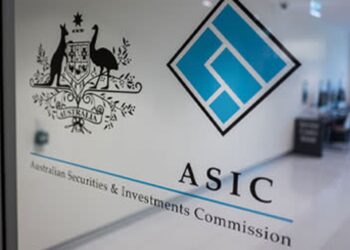On 31 December 2019, the government of China’s Hubei province announced that it was treating several dozen cases of a pneumonic illness that was believed to have originated in a live animal market in the city of Wuhan. On 11 January, the first death was reported – and on 23 January, Wuhan was placed under strict quarantine. Since then, markets have been roiled by massive selloffs, global supply chains have been splintered, and consumer confidence has plummeted. COVID-19 started off as little more than a rumour – but it’s quickly become something monstrous.
Outbreak
Speaking to ifa from Singapore, expatriate financial adviser Jarrad Brown said that the city’s Chinatown is empty and residents are stockpiling toilet paper and napkins amidst fears of shortages.
Singapore’s food delivery services are also enjoying skyrocketing business as people avoid crowded noodle shops and restaurants. But while Mr Brown is taking precautions – like wearing a face mask on airplanes – he isn’t feeling the fear. And given that the vast majority of his clients aren’t concerned about COVID-19 either (he estimates that only 5 per cent of clients have asked him about it) Mr Brown is focusing on the opportunities instead.
“Some of those sectors, like corporate travel, like the airlines, like the hotel groups, potentially the casinos – particularly with the large presence in Macau – there may be opportunities there, depending on just how ugly the numbers are,” Mr Brown says.
On 4 February, Macau took the extreme measure of closing its casinos for two weeks to prevent the easy spread of the virus – an action that has had far-reaching implications, causing entertainment company Melco to pull out of a deal with James Packer’s Crown Resorts in order to focus on its core business. While the casinos have since reopened, traffic is still down amidst strict health measures that have seen some casinos cleaning each chip after a gambler handles it.
“Given demand for gambling products, they will very easily be able to claw that revenue back. I would expect that there will be a rebound – particularly if they’re sold off more than the numbers justified.”
At least part of that rebound could come from the forced savings of delayed travel plans, with people more likely to splurge on luxuries and international travel when restrictions are lifted. A similar rebound was seen after SARs – but Mr Brown also believes that financial landscape is fundamentally different to 2003, when China was still finding its place on the world stage.
“We’re in quite a different market compared to where we were around the time of SARS, just in terms of earnings multiples, market valuations, and market caps around the world,” Mr Brown says.
“If you look at SARS we had quite a good buying opportunity, given that around six months after the outbreak we were seeing double digit returns. Personally, I don’t think we’re going to see that sharp a rebound this time, just because of how much growth is already priced into the market.”
The outbreak of COVID-19 is also exposing systemic weaknesses in markets and trade. China has essentially been underwriting global growth in the 21st century, with its massive expenditures on infrastructure – both inside China and as part of its Belt and Road Initiative in other parts of the developing world – creating enormous demand for commodities, particularly from Australia. Now that the main driver of global growth is out of action, people are starting to panic.
“I think we’re going to see markets and investors realise just how reliant we have been on China,” Mr Brown says.
“From a manufacturing viewpoint, to a tourism viewpoint, to the sales and goods of services. I think the trade wars led a lot of countries to rethink that exposure and look to diversify, but I don’t think it will have been enough once we start to see the numbers.”
Contagion
It’s easy to trace the impact that COVID-19 has had on the global economy. Chinese consumer services – restaurants and cinemas, where people get close to another – were hit first, and hardest. Travel took the next hit, both domestically and globally, as restrictions were imposed inside China and skyrocketing fear grounded millions of tourists. Then there was an impact on industrial production, as vital manufacturing supply chains unravelled amidst factory shutdowns. And the combined impact on those industries has ravaged market sentiment and stock pricing, says Ian Carmichael, a Portfolio Manager at Fairlight Asset Management.
“Fast growing companies have become very expensive in equity markets over the last couple of years,” Mr Carmichael says.
“Those kinds of high momentum, expensive growth companies, are usually the most vulnerable when you get these kinds of momentum reversals. You wouldn’t necessarily see a direct impact between the coronavirus and enterprise software companies, but you do see an impact on investor sentiment.”
And while COVID-19 has already heavily impacted consumer services and manufacturing, concerned investors should now be keeping a close eye on events outside of China.
“The key thing to watch that markets will care about is the infection rate outside of China, for two reasons,” Mr Carmichael says.
“One, it reflects the possibility that the pandemic does go global. And the second reason is that those statistics are much more reliable than those published inside China.”
Nowhere has that been more clear than in the massive slump in sharemarkets that has taken place following barely-contained outbreaks of COVID-19 in countries as far afield as Iran, South Korea, and Italy. The ASX dropped more than ten per cent over the course of seven sessions, while the Dow Jones, S&P 500, and the Nasdaq Composite saw their worst weeks since the GFC.
“The question I can’t answer is whether this a temporary or medium-term adjustment to investor psychology,” Mr Carmichael says.
“That’s always a lot harder to call because it depends a lot on the madness of crowds and how euphoric investors are prepared to be if this resets expectations. A lot of that will depend on how long this drags on, and also on policy response.”
Quarantine
“What we’re starting to see now is the actual impact on economic data,” BetaShares chief economist David Bassanese told ifa.
“The question now will be to what extent markets can see through that see through that and say ‘it’s only a short-term effect’.”
COVID-19 has arrived at an inopportune time. China was just finding its feet again after the US – China Trade War, which had already sent global market volatility skyrocketing as the two countries tried to undercut each other with tariffs and accusations of currency manipulation and IP theft. That period of volatility looked to be behind us with the signing of the Phase One trade deal. But while Mr Bassanese believes the United States will give China some latitude in tackling its agreements under the deal – for example, it’s unlikely the country will be importing $200 billion of US agricultural and manufactured goods in the near future – that might not be enough.
“I could quite confidently say that if this were not to be contained within a quarter – and if it dragged out over two to three quarters – there’s a very high chance of global recession,” Mr Bassanese says.
“This is a bigger disruption to global trade than the US – China Trade Wars.”
While everybody from the International Monetary Fund to Treasurer Josh Frydenberg and RBA Governor Philip Lowe were predicting that the global economy had reached a gentle turning point after years of slow growth, that gentle turning point is now in doubt. That could require central banks to step in – but where exactly the RBA could go in the event that the outbreak of COVID-19 drags on is uncertain.
“Even before the coronavirus impact I thought the RBA was likely to cut rates this year, simply because consumer spending has been very sluggish and not responded to the rebound in house prices that we’ve seen,” Mr Bassanese says.
“The income growth is still very weak. We’re now facing possibly a negative Q1 GDP number, which in turn could have second-round negative impacts on business and consumer confidence. I’ve long thought they would cut rates further and this only further informs my view.”
But successive rate cuts intended to stimulate the Australian economy have left the RBA little wriggle room, and while Mr Lowe has previously said that the bank would not be forced to launch a quantitative easing program, that drastic measure is seeming increasingly more likely as rates get closer and closer to zero and COVID-19 spreads. And while Mr Bassanese is also looking to the example of SARS, he – like Mr Brown – believes that it is quickly outstripping comparisons.
“It’s far more contagious,” Mr Bassanese says.
“We’re talking about something like 80,000 people infected and only 8000 for the SARS virus, whereas the fatality rate this time around is only one fifth as bad. So you’re looking at a 2 to 3 per cent versus something like ten per cent.”
But the differences don’t end there. As Mr Bassanese notes, Australia is now much more dependent on China than it was during the SARs outbreak. During SARs, short-term arrivals to Australia from China dropped by 80 per cent from February to May in 2002 – but at that time, travellers from China accounted for only 4 per cent of short-term travellers. In 2020, they accounted for 15 per cent – and their business, along with that of international students, accounted for .8 of Australia’s GDP – about $16 billion.
“If something like that happens, you’re looking at possibly 0.4 off GDP in one quarter. Q1 could be quite negative.”
But while the news is dire, there are upsides.
The troublesome symptoms of a flu virus – the runny nose, headache, and fever – are usually the result of the body’s immune response trying to contain and burn out the invader. That immune response might put you out of action for a few days, but it’s part of getting better. And similar to an immune response, the quarantines and travel bans that have devastated the global economy will likely also be what saves it.
“The negative economic impact we’re experiencing right now in terms of reduced travel and reduced trade flows are the way in which this virus ends up being contained,” Mr Bassanese says.
“It’s a necessary medicine we’ve got to take.”
Mr Bassanese is still hopeful that the virus can be contained, and echoes Mr Brown’s point that it’s likely to be a buying opportunity – if it can be contained in the first quarter.
“Equity markets sell off some companies we know are well positioned to do business in China over the long term. They may well take a short run hit, like the gambling companies, and the food producers and health care companies that are exporting into China.”
But while Mr Bassanese hopes that the virus will be contained within the next two to three months, breakout cases in Italy, Iran, and Korea means that expectations must be tempered. And if quarantines and manufacturing shutdowns continue, the impacts could be disastrous.
Recovery
While COVID-19 is unlikely to be the next Black Death, it’s still a terrifying and life-threatening illness, the effects of which have now been felt around the world – from the nearly empty streets of Wuhan to the loftiest offices of the world’s largest financial institutions. It has caused, and will continue to cause, massive disruption to the global economy, biting into the bottom line of everything from noodle shops to steel manufacturers and petroleum producers. And while hope remains that its impacts will be short-lived – that order will prevail in global markets and the world will not slip into recession – it seems that nobody really knows what will happen next.



